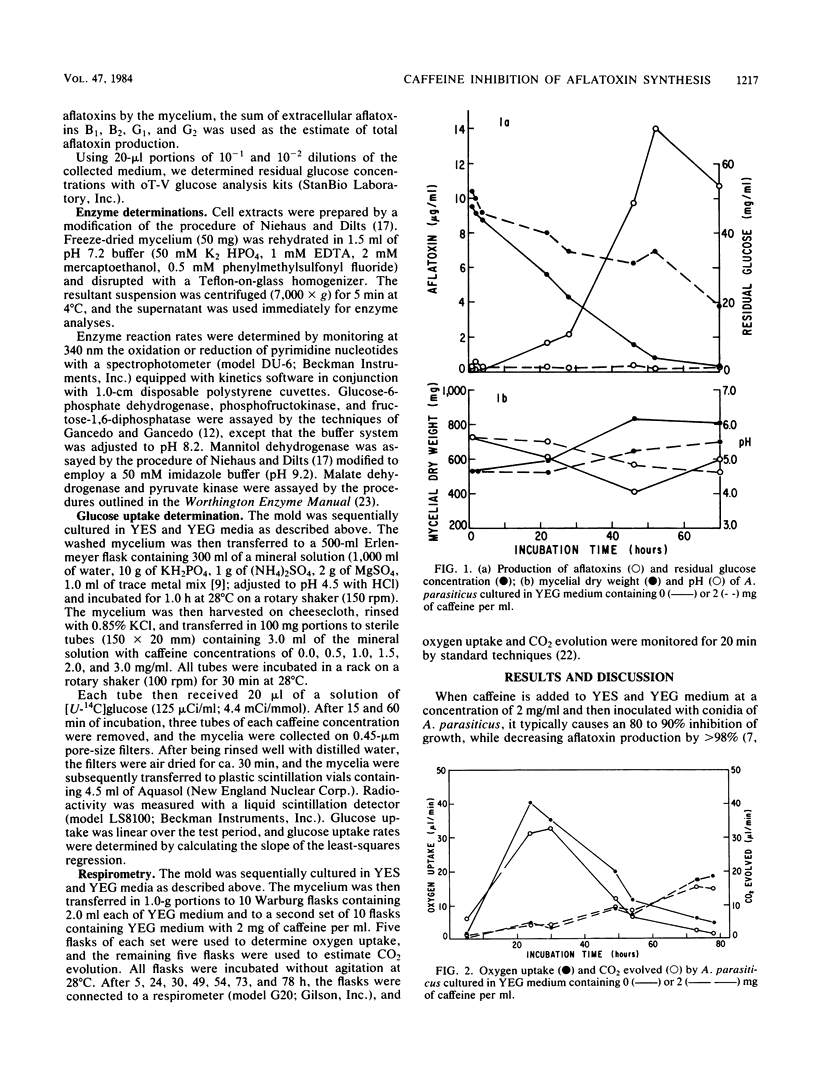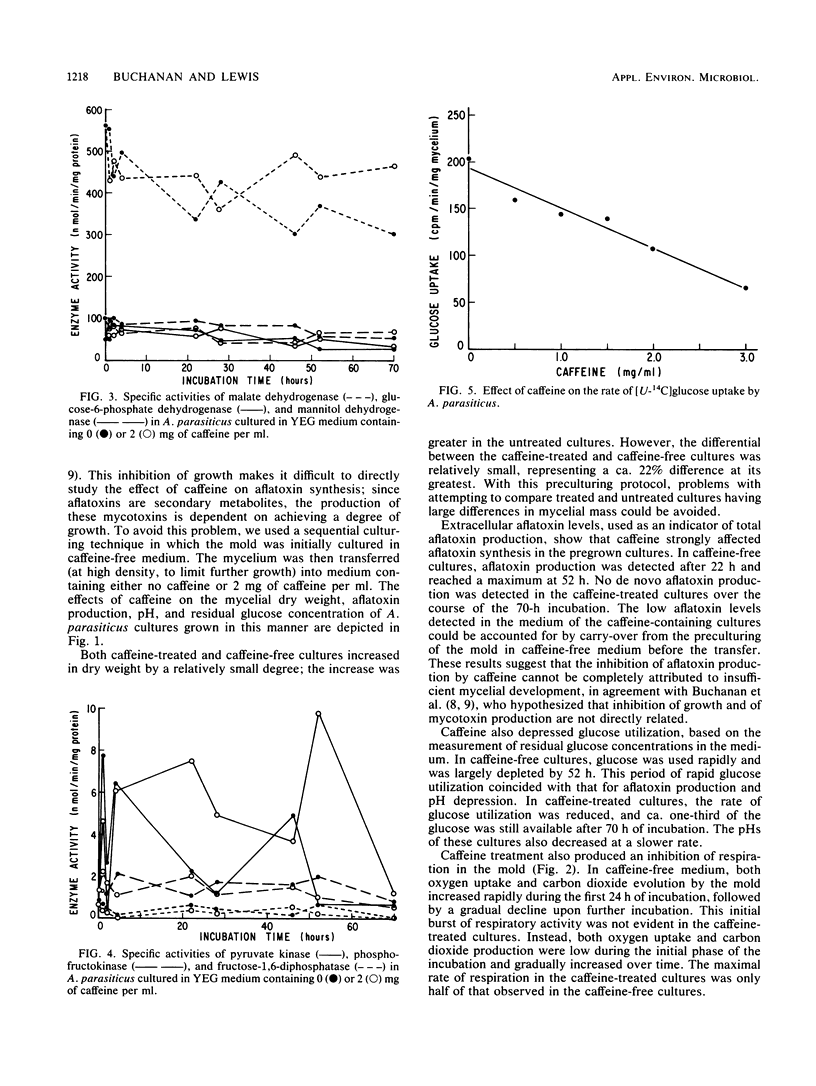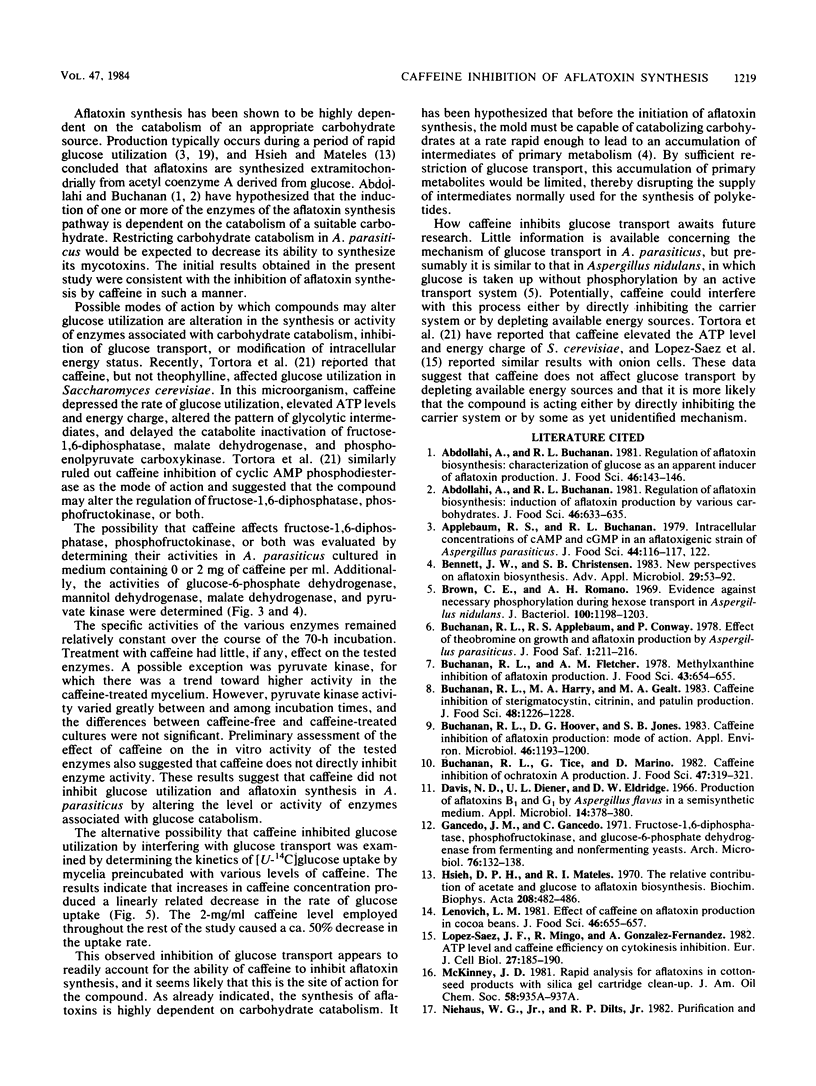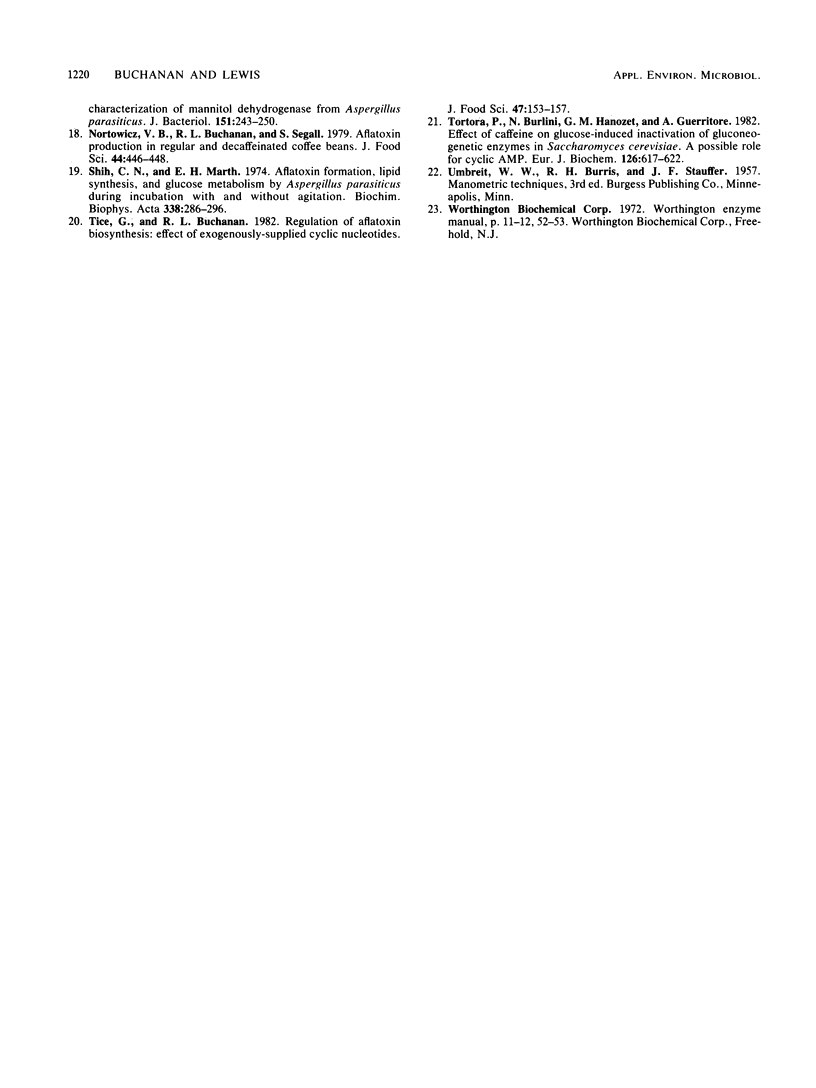Abstract
Aflatoxin production by pregrown cultures of Aspergillus parasiticus was completely inhibited by incorporation of 2 mg of caffeine per ml into the medium. This was accompanied by a decrease in glucose utilization and an inhibition of oxygen uptake and carbon dioxide evolution. Enzyme analyses indicated no significant differences in specific activities on glucose-6-phosphate dehydrogenase, mannitol dehydrogenase, phosphofructokinase, fructose 1,6-diphosphatase, pyruvate kinase, or malate dehydrogenase. Glucose uptake kinetics indicated a linear dose-related inhibition of glucose uptake. It appears likely that caffeine inhibits aflatoxin synthesis by restricting the uptake of carbohydrates which are ultimately used by the mold to synthesize this family of mycotoxins.
Full text
PDF




Selected References
These references are in PubMed. This may not be the complete list of references from this article.
- Bennett J. W., Christensen S. B. New perspectives on aflatoxin biosynthesis. Adv Appl Microbiol. 1983;29:53–92. doi: 10.1016/s0065-2164(08)70354-x. [DOI] [PubMed] [Google Scholar]
- Brown C. E., Romano A. H. Evidence against necessary phosphorylation during hexose transport in Aspergillus nidulans. J Bacteriol. 1969 Dec;100(3):1198–1203. doi: 10.1128/jb.100.3.1198-1203.1969. [DOI] [PMC free article] [PubMed] [Google Scholar]
- Buchanan R. L., Hoover D. G., Jones S. B. Caffeine inhibition of aflatoxin production: mode of action. Appl Environ Microbiol. 1983 Nov;46(5):1193–1200. doi: 10.1128/aem.46.5.1193-1200.1983. [DOI] [PMC free article] [PubMed] [Google Scholar]
- Davis N. D., Diener U. L., Eldridge D. W. Production of aflatoxins B1 and G1 by Aspergillus flavus in a semisynthetic medium. Appl Microbiol. 1966 May;14(3):378–380. doi: 10.1128/am.14.3.378-380.1966. [DOI] [PMC free article] [PubMed] [Google Scholar]
- Gancedo J. M., Gancedo C. Fructose-1,6-diphosphatase, phosphofructokinase and glucose-6-phosphate dehydrogenase from fermenting and non fermenting yeasts. Arch Mikrobiol. 1971;76(2):132–138. doi: 10.1007/BF00411787. [DOI] [PubMed] [Google Scholar]
- Hsieh D. P., Mateles R. I. The relative contribution of acetate and glucose to aflatoxin biosynthesis. Biochim Biophys Acta. 1970 Jun;208(3):482–486. doi: 10.1016/0304-4165(70)90222-9. [DOI] [PubMed] [Google Scholar]
- López-Sáez J. F., Mingo R., González-Fernández A. ATP level and caffeine efficiency on cytokinesis inhibition in plants. Eur J Cell Biol. 1982 Jun;27(2):185–190. [PubMed] [Google Scholar]
- Niehaus W. G., Jr, Dilts R. P., Jr Purification and characterization of mannitol dehydrogenase from Aspergillus parasiticus. J Bacteriol. 1982 Jul;151(1):243–250. doi: 10.1128/jb.151.1.243-250.1982. [DOI] [PMC free article] [PubMed] [Google Scholar]
- Tortora P., Burlini N., Hanozet G. M., Guerritore A. Effect of caffeine on glucose-induced inactivation of gluconeogenetic enzymes in Saccharomyces cerevisiae. A possible role of cyclic AMP. Eur J Biochem. 1982 Sep 1;126(3):617–622. doi: 10.1111/j.1432-1033.1982.tb06825.x. [DOI] [PubMed] [Google Scholar]


